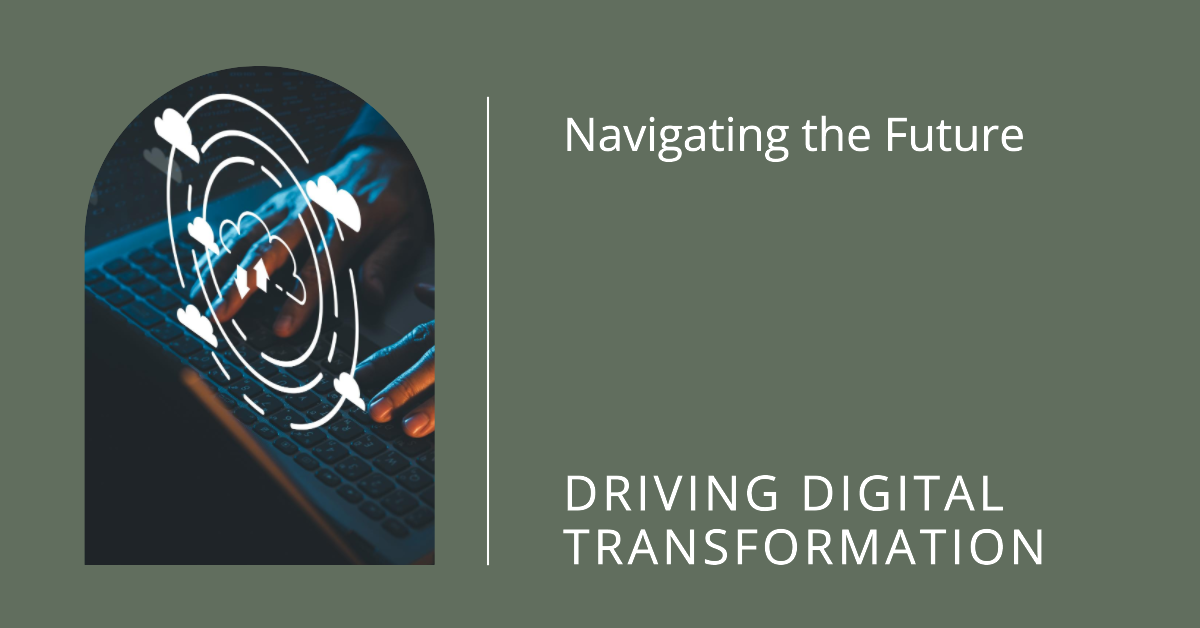
Important Drivers Of Digital Transformation
Contents
In a previous article, I wrote about Digital Transformation for Small Businesses. I covered the Definition, Evolution, Impact, Drivers, Benefits, and Challenges. And I offered a Roadmap that small businesses can follow to start their journey in digital transformation. In this article I focus my discussion on the drivers of digital transformation. What are the most important drivers that small businesses need to heed, and what do we mean by these drivers.
Changing Customer Expectations
The first of these drivers of digital transformation is changing customer expectations. Customers now demand digital connectivity, personalized experiences, convenience, 24/7 availability, transparency, instant communication, social responsibility, feedback management, and an omnichannel approach. Small businesses need to adapt to these expectations by leveraging digital tools and technology to provide exceptional customer experiences, remain agile, and foster innovation to stay competitive in the evolving market landscape.
Changing customer expectations are indeed a significant driver of digital transformation for small businesses. Here’s what we mean by this key factor:
Digital Connectivity
Customers expect businesses to be accessible online. They want to engage with companies through various digital channels such as websites, mobile apps, social media, email, and chat. This means that small businesses must establish a strong online presence to meet these expectations.
In my experience this is certainly a good starting point towards digital transformation. Having a well thought of website, attended email addresses, and social media presence brings small businesses closer to their customers.
Personalization
Customers expect businesses to offer personalized experiences. They want products, services, and content tailored to their specific needs and preferences. Small businesses can use customer data and analytics to provide personalized recommendations and offers.
When considering personalization, think of the Amazon website and how they always seem to have suggestions for you. This is particularly important in e-commerce, and in transactional websites.
Convenience
Customers value convenience more than ever. They expect easy and frictionless interactions with businesses. Digital tools like online booking systems, self-service portals, and mobile payment options make transactions and communication more convenient for customers.
24/7 Availability
In the digital age, customers expect businesses to be available 24/7. This doesn’t mean small businesses have to be physically open all the time, but they should have automated systems and chatbots that can handle customer inquiries and transactions outside of regular business hours.
If your customers expect you to have some form of availability all the time, considering Artificial Intelligence (AI) solutions is wise. And luckily, the entry barrier to AI has been substantially lowered most recently. Contact us to discuss your ideas.
Transparency
Customers want transparency from businesses. They want to know how their data is used, how products are made, and the social and environmental impacts of a business’s operations. Digital platforms can be used to communicate this information effectively.
Instant Communication
Customers expect quick responses to their inquiries and issues. Digital tools like live chat, social media messaging, and chatbots can help businesses provide timely responses and support.
Social Responsibility
Many customers now consider a company’s social and environmental responsibility when making purchasing decisions. Small businesses can use digital channels to showcase their sustainability efforts and community engagement.

Feedback and Reviews
Customers rely heavily on online reviews and social proof when making purchasing decisions. Small businesses need to actively manage their online reputation and encourage satisfied customers to leave positive reviews.
I can’t stress this aspect enough, especially for small businesses. Having a stellar online reputation (think Facebook, Instagram, or even Google Maps ratings) is this age’s word-of-mouth marketing!
Omnichannel Experience
Customers may interact with a business through multiple channels (e.g., starting on a website and then switching to a mobile app). Providing a seamless omnichannel experience is crucial to meet their expectations.
Innovation and Agility
Digital transformation allows small businesses to adapt and innovate more quickly. Customers appreciate businesses that stay current with technology trends and can pivot to address changing needs and preferences.
To meet these evolving customer expectations, small businesses should invest in digital technologies, data analytics, and customer relationship management tools. Additionally, they should continuously monitor customer feedback and market trends to stay ahead in the digital transformation journey and remain competitive in their respective industries.
Market Competition
Market competition can indeed be a powerful driver for small businesses to undergo digital transformation. Here are some important and attainable ways in which market competition can motivate small businesses to embrace digital tools and technologies:
Enhancing Customer Experience
To compete effectively, small businesses need to deliver exceptional customer experiences. Digital tools, such as customer relationship management (CRM) systems, online chat support, and personalized marketing, help businesses better understand and engage with their customers. By enhancing the customer experience, small businesses can stand out in the market.
Expanding Online Presence
In today’s digital age, having a strong online presence is crucial for reaching a wider audience. Small businesses can leverage social media, e-commerce platforms, and search engine optimization (SEO) techniques to extend their reach. A robust online presence helps them compete with both traditional and digital-native competitors.
Data-Driven Decision-Making
Access to data analytics tools allows small businesses to make informed decisions. They can analyze customer data, market trends, and competitor performance to adapt their strategies. This data-driven approach helps them remain agile and competitive in a rapidly changing business landscape.

Agile Adaptation to Market Changes
Market competition often brings unexpected changes. Small businesses that are digitally transformed can quickly pivot in response to these changes. By utilizing technologies like cloud computing and agile project management methodologies, they can adapt their products and services to meet evolving customer demands.
Cost Reduction and Scalability
Digital tools and technologies can help small businesses reduce costs by automating tasks, outsourcing, or leveraging shared resources. This cost savings can be reinvested in growth initiatives. Furthermore, the scalability of digital solutions allows small businesses to grow without the need for significant infrastructure investments.
Market competition acts as a catalyst for small businesses to embrace digital transformation. By enhancing customer experiences, improving operational efficiency, expanding their online presence, making data-driven decisions, staying agile, and achieving cost savings, small businesses can compete effectively in today’s dynamic business environment. While the specific strategies may vary, these key areas are fundamental and attainable for small businesses looking to thrive in the digital age.
Operational Efficiency
Digital transformation has become a critical strategic initiative for businesses of all sizes, including small businesses, due to its potential to drive operational efficiency and many other benefits. Here are some additional details and insights about how digital transformation can enhance operational efficiency for small businesses:
Automation of Repetitive Tasks
Many routine and repetitive tasks can be automated through digital tools and technologies. This includes tasks like data entry, customer communication, invoice generation, and more. Automation reduces the time and effort spent on these tasks, minimizing errors and allowing employees to focus on more valuable, strategic activities.
Streamlined Supply Chain Management
Small businesses can optimize their supply chains by using digital tools. They can track inventory levels in real-time, predict demand more accurately, and coordinate with suppliers and distributors more efficiently. This minimizes stockouts, overstock situations, and reduces costs associated with supply chain disruptions.
Inventory Management
Efficient inventory management is crucial for businesses with physical products. Digital transformation allows for the implementation of advanced inventory management systems that can help in real-time tracking, reducing holding costs, and ensuring products are available when needed.
Reduced Operating Costs
Automating processes, such as bookkeeping, payroll, and document management, can significantly reduce operating costs. Additionally, digital tools like cloud computing can reduce the need for physical infrastructure, leading to further cost savings.
Remote Work and Flexibility
Digital transformation often involves the adoption of remote work and collaboration tools. This not only reduces the need for physical office space but also provides employees with more flexible work arrangements, which can lead to increased job satisfaction and productivity.
Access to New Markets
Small businesses can leverage digital platforms to access new markets, both domestically and internationally. E-commerce platforms, digital marketing, and online sales channels can expand a company’s reach without a significant increase in operational costs.
Scalability and Growth
Digital systems are often more scalable than traditional, manual processes. As small businesses grow, they can expand their digital infrastructure and capabilities more easily, allowing for smooth scaling without a proportional increase in operational costs.
Innovation and Competitive Advantage
Embracing digital transformation can foster a culture of innovation within a small business. It allows for the adoption of new technologies and business models, providing a competitive edge in the market.
Operational efficiency, one of the drivers of digital transformation, offers a range of benefits for small businesses. It’s not just about cutting costs but also about optimizing processes, accessing new opportunities, and positioning the business for growth and innovation in an increasingly digital-centric world. However, it’s essential for small businesses to carefully plan and execute their digital transformation strategies to reap the full benefits and mitigate potential challenges.
Access To Data
Access to data is another one of these critical drivers of digital transformation in today’s business landscape. It plays a pivotal role, as data emerges as a priceless asset in the contemporary business landscape. By utilizing digital tools and analytics, small enterprises gain valuable insights into customer behavior, market trends, and operational efficiency, empowering data-driven decision-making and strategic adaptability. This approach enhances competitiveness, enabling smaller firms to thrive in an increasingly data-centric business environment while emphasizing the need for data security and ethical data management. Here are some key points to consider:
Data as a Strategic Asset
Data is often referred to as the “new oil” because of its immense value. Companies of all sizes are recognizing that data is a strategic asset that can be leveraged to gain a competitive edge. It can reveal hidden patterns, trends, and opportunities that were previously inaccessible.
Data Sources
Small businesses can access data from various sources. These include customer interactions, website traffic, social media, sales transactions, IoT devices, and more. The key is to collect, store, and analyze this data effectively.
Data Analytics
Digital tools and technologies, such as data analytics platforms and machine learning algorithms, enable businesses to make sense of their data. Small businesses can use these tools to perform tasks like predictive analytics, sentiment analysis, and customer segmentation.
Customer Insights
Access to data allows small businesses to better understand their customers. By analyzing customer behavior and preferences, they can tailor their products or services, marketing strategies, and customer support to meet customer expectations effectively.
Market Trends
Small businesses can track market trends and changes in consumer behavior through data analysis. This helps them adapt quickly to market shifts, identify new opportunities, and stay ahead of the competition.
Decision-Making
Informed decision-making is one of the primary benefits of data access. Small businesses can make data-backed decisions rather than relying on gut feelings or guesswork. This can lead to more effective strategies and reduced risks.
Competitiveness
Small businesses often face stiff competition from larger corporations. Access to data and the ability to analyze it can level the playing field. It allows smaller companies to be agile, responsive, and innovative, which can make them more competitive.
Data Security and Privacy
While data is a valuable asset, it’s important to note that data comes with responsibilities. Small businesses must ensure data security and comply with data privacy regulations to protect customer information and maintain trust.
Data Governance
Establishing clear data governance practices is crucial. This includes data collection, storage, and access policies, as well as data quality management. Small businesses need to ensure that their data is accurate, reliable, and used ethically.
Scalability
As small businesses grow, they may collect more data. Digital transformation strategies should be scalable to accommodate increased data volumes and more complex analytics.
Data access is a cornerstone of digital transformation for small businesses. It empowers them to harness the value of data to make better decisions, improve customer experiences, and remain competitive in a rapidly changing business environment. However, it’s important for small businesses to approach data with care, ensuring security, privacy, and effective governance.
Scalability
One more of the drivers of digital transformation for small businesses, scalability enables them to adapt and thrive in dynamic market environments. Scalability is attained in utilizing cloud technologies, such as cloud computing, or software-as-a-service platforms. Solutions like Microsoft Office 365, or Amazon Web Services continue to offer scalability benefits to small businesses. Here are a few key points highlighting the importance of scalability in digital transformation:
Cost Efficiency
Small businesses often have limited resources, and scalability allows them to reduce costs during slower periods by downsizing their cloud based digital infrastructure. They can avoid large upfront capital investments and instead pay for resources on-demand, which is more cost-effective.
Business Agility
Cloud solutions and scalability offer the agility needed to respond quickly to market fluctuations, changing customer demands, and unforeseen events. Small businesses can scale up when experiencing growth opportunities and scale down during economic downturns, maintaining flexibility.
Enhanced Disaster Recovery
Digital transformation often includes disaster recovery and business continuity planning. Scalability in the cloud enables data redundancy and backup solutions, ensuring that small businesses can quickly recover from data loss or system failures.
Easier Collaboration
Again, cloud and scalability solutions extend to collaborative tools and communication platforms. Small businesses can seamlessly scale their communication and collaboration tools to support remote workforces and collaborate with partners and customers worldwide.
Data Security
Finally, scalability provides small businesses access to enterprise-level security solutions. They can benefit from advanced security features and regular updates without the burden of maintaining and upgrading their own security infrastructure.
Scalability is a fundamental driver of digital transformation for small businesses, as it empowers them to efficiently manage their resources, respond to market changes, and compete on a global scale. It offers a path to growth, resilience, and competitiveness in the digital age.
Global Reach
Serving as one of the pivotal drivers of digital transformation, global reach involves diversifying market presence, accessing new revenue streams, gaining cultural and demographic insights, enhancing brand recognition, and forging strategic alliances. Embracing a global audience empowers small businesses to tap into new markets, adapt to different consumer behaviors, and position themselves for sustainable growth, reducing reliance on a single market and significantly increasing revenue potential.
Market Diversification
Expanding the customer base globally allows small businesses to tap into diverse markets with unique needs and preferences. This diversification can help mitigate risks associated with relying on a single market or region.
Access to New Revenue Streams
Going global opens up opportunities to generate revenue from markets that may have higher demand for specific products or services. Small businesses can explore untapped markets and revenue streams they may not have considered otherwise.
Cultural and Demographic Insights
Establishing a global presence provides invaluable insights into different cultures, demographics, and consumer behaviors. This understanding can lead to tailored marketing strategies and product offerings, enhancing competitiveness.
Brand Exposure and Recognition
A global reach can contribute to greater brand visibility and recognition. As a business’s reputation expands across borders, it can further drive customer trust and loyalty, which is a crucial aspect of digital transformation.
Strategic Alliances and Partnerships
The ability to reach a global audience can facilitate collaborations with international partners, suppliers, or distributors. This can lead to more efficient and cost-effective supply chains and distribution networks.
Global reach is yet another one of the drivers of digital transformation for small businesses, extending beyond the realms of customer expectations, market competitiveness, operational efficiency, and scalability. It involves diversifying market presence, accessing new revenue streams, gaining cultural and demographic insights, and enhancing brand recognition. Embracing a global audience empowers small businesses to tap into new markets, adapt to different consumer behaviors, and position themselves for sustainable growth, reducing reliance on a single market and significantly increasing revenue potential.
Regulatory Compliance
Regulatory compliance is one of the most important drivers for digital transformation.
Evolving regulations, particularly data protection laws like the General Data Protection Regulation (GDPR) in the European Union, have placed a growing emphasis on the responsible management and protection of customer data. In the following ways, digital transformation can help small businesses ensure compliance and avoid potential legal issues and fines:
Data Collection and Management
Digital transformation enables businesses to streamline and automate their data collection and management processes. By adopting modern data storage and management systems, small businesses can ensure that customer data is collected, processed, and stored in compliance with data protection regulations. This includes obtaining explicit consent, limiting data processing to the purposes for which it was collected, and securely storing and transmitting data.
Data Security
Small businesses can implement advanced cybersecurity measures as part of their digital transformation efforts. These security measures help protect sensitive customer data from breaches and unauthorized access, thereby reducing the risk of data leaks that could lead to regulatory violations and substantial fines.
Data Access Control
Digital transformation often involves implementing role-based access control and encryption to ensure that only authorized personnel can access sensitive customer data. This strengthens security and helps businesses comply with regulatory requirements for data access and protection.
Data Transparency
Regulatory compliance often necessitates transparency in how customer data is used. Digital transformation can facilitate the development of customer-facing portals and communication channels that allow individuals to easily access and manage their own data, as required by regulations like GDPR. This transparency can help build trust and avoid legal issues.
Data Retention and Deletion
Many regulations, including GDPR, mandate specific data retention periods and the right to be forgotten. Digital transformation can automate data retention policies and deletion procedures, ensuring that businesses do not hold data longer than necessary and allowing individuals to request the deletion of their data when required.
Audit Trails and Reporting
Compliance often requires businesses to maintain detailed records of data processing activities. Digital transformation can help in generating audit trails and reports that demonstrate compliance with data protection regulations. These records can be invaluable in case of audits or legal inquiries.
Legal Documentation and Policies
Small businesses can use digital tools to create and manage legal documentation and privacy policies. These documents need to be accessible to customers and regularly updated in line with changing regulations. Digital transformation makes it easier to maintain and communicate these policies effectively.
Training and Awareness
Digital transformation can support employee training and awareness programs related to data protection and compliance. E-learning modules and digital resources can ensure that all employees understand their responsibilities and the importance of adhering to regulatory requirements.
Monitoring and Alerts
Automated monitoring and alert systems can be integrated into digital infrastructure to notify businesses of potential data breaches or compliance issues in real-time. This proactive approach can help small businesses take immediate action to mitigate risks and maintain compliance.
Scalability and Flexibility
Digital transformation allows small businesses to scale and adapt their operations to comply with evolving regulations. It’s easier to update and modify digital systems compared to traditional manual processes, ensuring ongoing compliance as regulations change.
Digital transformation is a powerful tool for small businesses to ensure regulatory compliance, particularly in the realm of data protection and privacy. By integrating technology and best practices into their operations, small businesses can mitigate the risk of legal issues and fines, build trust with customers, and remain competitive in an increasingly regulated business environment.
Digital Agility
One of the key drivers of digital transformation, digital agility is a concept that underscores an organization’s ability to rapidly and effectively adapt to changing circumstances. It is closely related to the idea of adaptability during crises, as exemplified during the COVID-19 pandemic, where businesses had to quickly adjust their operations and processes to navigate unprecedented challenges.
Here are some key aspects of digital agility:
Adaptability
Digital Agility means being flexible and responsive to evolving situations. Organizations that exhibit digital agility can swiftly pivot their strategies, workflows, and technologies to address unexpected disruptions, such as economic downturns or public health crises.
Technology Integration
It involves the seamless integration of digital tools and technologies into an organization’s operations. This might encompass cloud computing, remote work solutions, e-commerce platforms, data analytics, and more, which are crucial for resilience during crises and for ongoing digital transformation.
Innovation
Digital Agility is closely tied to an organization’s capacity to innovate and experiment with new digital solutions. During a crisis, businesses that embrace innovation can discover new ways to operate, reach customers, and deliver value.
Remote Work and Collaboration
The ability to seamlessly transition to remote work and maintain collaboration among employees is a vital component of Digital Agility. This ensures business continuity during disruptions and underscores the importance of digital tools for communication and workflow management.
Cybersecurity and Risk Management
Being digitally agile also involves robust cybersecurity measures and risk management strategies. With increased reliance on digital tools, businesses must protect themselves from cyber threats and data breaches.
Continuous Learning and Improvement
Organizations that embrace Digital Agility commit to ongoing learning and improvement. They understand that the digital landscape is dynamic and ever-evolving, and they stay open to adopting new technologies and methodologies.
In essence, Digital Agility is a proactive and forward-thinking approach to digital transformation. It involves preparing for unforeseen challenges and leveraging digital capabilities to thrive during crises and position the organization for sustained success in an increasingly digital world.
Conclusion
For small businesses to consider going through digital transformation, there needs to be compelling drivers. Because digital transformation can be an expensive investment, clear goals and objectives are required to justify the risk and challenges to be undertaken. Most commonly, driver of technical transformation are one or more of changing customer expectations, market competition, operational efficiency, access to data, scalability, global reach, regulatory compliance, and, or digital agility.
In this article I discussed these drivers of digital transformation, and delved more into what each of them may entail.
Whatever your businesses driver for digital transformation, it is important to align your transformation journey with your business goals and objectives.
Reach Out
Feel free to reach out to me to discuss your business’ digital transformation outlook, concerns, or strategy.

Leave a Reply
You must be logged in to post a comment.